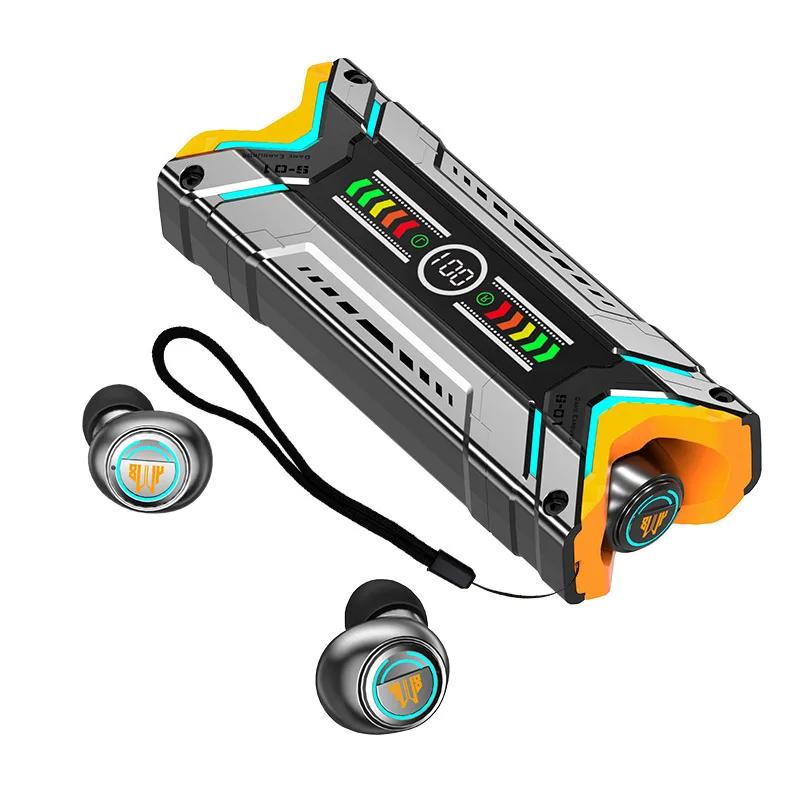How To Wear Earbuds?
Wearing earbuds might seem like a straightforward task, but achieving the perfect fit and optimal sound quality can be a bit more nuanced. Whether you're using them for music, podcasts, or phone calls, understanding how to wear earbuds correctly can significantly enhance your listening experience. In this article, we will delve into the various aspects of wearing earbuds, from choosing the right type to ensuring comfort and sound quality.
Choosing the Right Earbuds

Before we get into the specifics of wearing earbuds, it's essential to choose the right type for your needs. Earbuds come in various shapes and sizes, and selecting the right pair can make a significant difference in comfort and sound quality.
1. In-Ear Monitors (IEMs): These earbuds fit snugly inside the ear canal and provide excellent sound isolation. They are ideal for audiophiles and those who want to block out external noise.
2. Earbuds with Ear Hooks: These are designed for active users. The ear hooks provide additional stability, making them perfect for workouts and running.
3. True Wireless Earbuds: These are completely wire-free and offer great convenience. They usually come with a charging case for portability.
4. Standard Earbuds: These rest on the outer ear and are often more comfortable for extended use but may not provide the best sound isolation.
Ensuring a Proper Fit

A proper fit is crucial for both comfort and sound quality. Here are some steps to ensure your earbuds fit correctly:
1. Choose the Right Ear Tips: Most earbuds come with multiple ear tip sizes. Experiment with different sizes to find the one that fits snugly but comfortably in your ear canal.
2. Insert the Earbuds Correctly: Gently pull your earlobe down and back to open up the ear canal. Insert the earbud and twist it slightly to secure it in place.
3. Check for a Seal: A good seal is essential for sound quality and noise isolation. If you can hear a lot of external noise, try a different ear tip size or adjust the earbud's position.
4. Use Ear Hooks or Wings: If your earbuds come with additional stabilizers like ear hooks or wings, use them to secure the earbuds in place, especially during physical activities.
Optimizing Sound Quality

Once you have a proper fit, the next step is to optimize sound quality. Here are some tips to get the best audio experience:
1. Adjust the Equalizer Settings: Most smartphones and music apps come with equalizer settings. Adjust these settings to match your listening preferences.
2. Use High-Quality Audio Files: The quality of your audio files can significantly impact sound quality. Use high-resolution audio files whenever possible.
3. Keep Your Earbuds Clean: Earwax and debris can affect sound quality. Regularly clean your earbuds with a soft, dry cloth or a specialized cleaning tool.
4. Update Firmware: If your earbuds come with firmware updates, make sure to install them. These updates can improve sound quality and fix any bugs.
Comfort and Long-Term Use

Wearing earbuds for extended periods can sometimes lead to discomfort. Here are some tips to ensure long-term comfort:
1. Take Breaks: Give your ears a break every hour to prevent discomfort and potential hearing damage.
2. Use Foam Tips: Foam tips can be more comfortable than silicone tips for long-term use. They also provide better noise isolation.
3. Adjust Volume Levels: Listening at high volumes for extended periods can cause ear fatigue and hearing damage. Keep the volume at a moderate level.
4. Choose Lightweight Earbuds: Heavier earbuds can cause discomfort over time. Opt for lightweight models if you plan to use them for extended periods.
Troubleshooting Common Issues
Even with the best practices, you might encounter some common issues while wearing earbuds. Here are some troubleshooting tips:
1. Earbuds Keep Falling Out: If your earbuds keep falling out, try using different ear tips or ear hooks. You can also try wearing them over the ear for added stability.
2. Unbalanced Sound: If one earbud is louder than the other, check for earwax buildup or debris. Clean the earbuds and check the audio balance settings on your device.
3. Bluetooth Connectivity Issues: For wireless earbuds, ensure they are fully charged and within range of your device. Reset the Bluetooth connection if necessary.
4. Ear Pain: If you experience ear pain, it could be due to an improper fit or wearing them for too long. Adjust the fit or take breaks to alleviate discomfort.
Special Considerations for Different Activities
Different activities may require different approaches to wearing earbuds. Here are some special considerations:
1. Workouts and Running: Use earbuds with ear hooks or wings for added stability. Ensure they are sweat-resistant and have a secure fit.
2. Traveling: Noise-canceling earbuds can be beneficial for blocking out ambient noise during flights or commutes. Ensure they are comfortable for long-term use.
3. Work and Study: Choose earbuds that provide good sound isolation but are comfortable for extended use. Consider using foam tips for added comfort.
4. Sleeping: If you wear earbuds to sleep, choose a pair designed for this purpose. They should be lightweight, comfortable, and have a secure fit.
Wearing earbuds correctly can significantly enhance your listening experience, providing both comfort and optimal sound quality. By choosing the right type of earbuds, ensuring a proper fit, optimizing sound quality, and addressing common issues, you can make the most out of your earbuds. Whether you're using them for music, workouts, or work, these tips will help you achieve the best possible experience. Remember, the key to a great earbud experience lies in the details, so take the time to find what works best for you.
